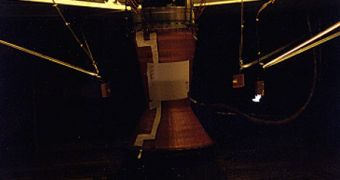NASA managed recently to complete its third successful testing of a new engine that was designed to allow the agency to send astronauts to the Moon again. The new engine has to be able to lift the future buggy, which will undoubtedly be heavier than its predecessors. New models are already in testing, and rumor has it that they will be enclosed, so as to spare astronauts the inconvenience of having to wear bulky spacesuits while conducting rigorous scientific experiments.
"The first test series in 2006 was a challenge but showed promise. Testing in 2007 provided an in-depth examination of low-power-level throttling and engine performance characteristics. This third cycle we actively addressed and found solutions to the challenges we faced," shared Tony Kim, who is the Deep Throttling Engine project manager at NASA's Marshall Space Flight Center, in Huntsville, Alabama.
"The technology developed from this effort will help engineers successfully design future cryogenic engines to meet the throttling requirements of the Constellation Program's Altair lunar lander," Kim added.
The new Common Extensible Cryogenic Engine (CECE) has approximately 13,800 pounds of thrust, and, most importantly, has the ability to decelerate from 100 percent engine output to just 10 percent. This allows for a smooth landing on the surface of the Moon, where the atmosphere is less dense than on Earth, and other flying principles apply. Also, these engines will allow for a smoother take-off, thus avoiding damage to expensive and delicate technology.
The CECE is fueled by liquid hydrogen and liquid oxygen, which are cooled at sub-zero temperature. The output they generate is sufficient for breaking the Moon's gravitational pull, NASA representatives say. The Pratt & Whitney Rocketdyne RL10 upper stage rocket engine was the base for the new design, and its third successful test fire proved that the team working on the project had successfully solved some of the issues that arose during the last two tests.

 14 DAY TRIAL //
14 DAY TRIAL //